Abstract
The extracellular emulsifier of Arthrobacter RAG-1 was deproteinized by hot phenol treatment and purified by fractional precipitation with (NH4)2SO4. The active fraction, precipitating between 30 and 35% saturation [EF-RAG(UET) WA], appeared to be homogeneous by immunodiffusion and sedimentation analysis. EF-RAG(UET) WA had an intrinsic viscosity of 750 cm3/g, a sedimentation constant of 6.06S, a diffusion constant of 5.25 × 10−8 cm2 s−1, and a partial molar volume of 0.712 cm3 g−1. From these data a weight average molecular weight of 9.76 × 105 and a viscosity average molecular weight of 9.88 × 105 were calculated. EF-RAG(UET)WA contained 46.7% C, 7.01% H, and 6.06% N. Titration of the nonreducing polymer gave a single inflection point (pK′ = 3.05), corresponding to 1.5 μmol of carboxyl groups per mg. Direct estimation of O-ester and hexose content of the highly acidic polymer yielded 0.65 and 0.29 μmol/mg, respectively. Mild alkaline hydrolysis released fatty acids with an average molecular weight of about 231. Strong acid hydrolysis of EF-RAG(UET)WA yielded d-glucose (minor), d-galactosamine (major), and an unidentified amino uronic acid (major).
Full text
PDF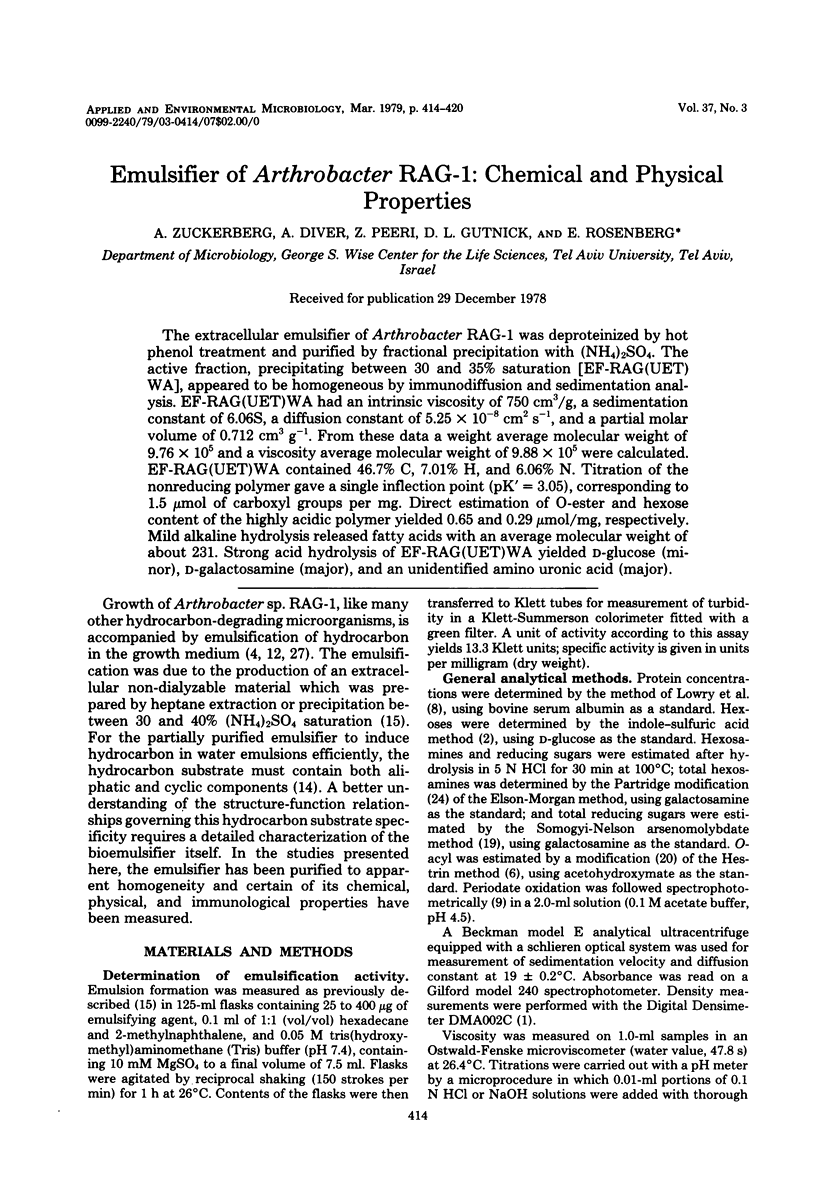
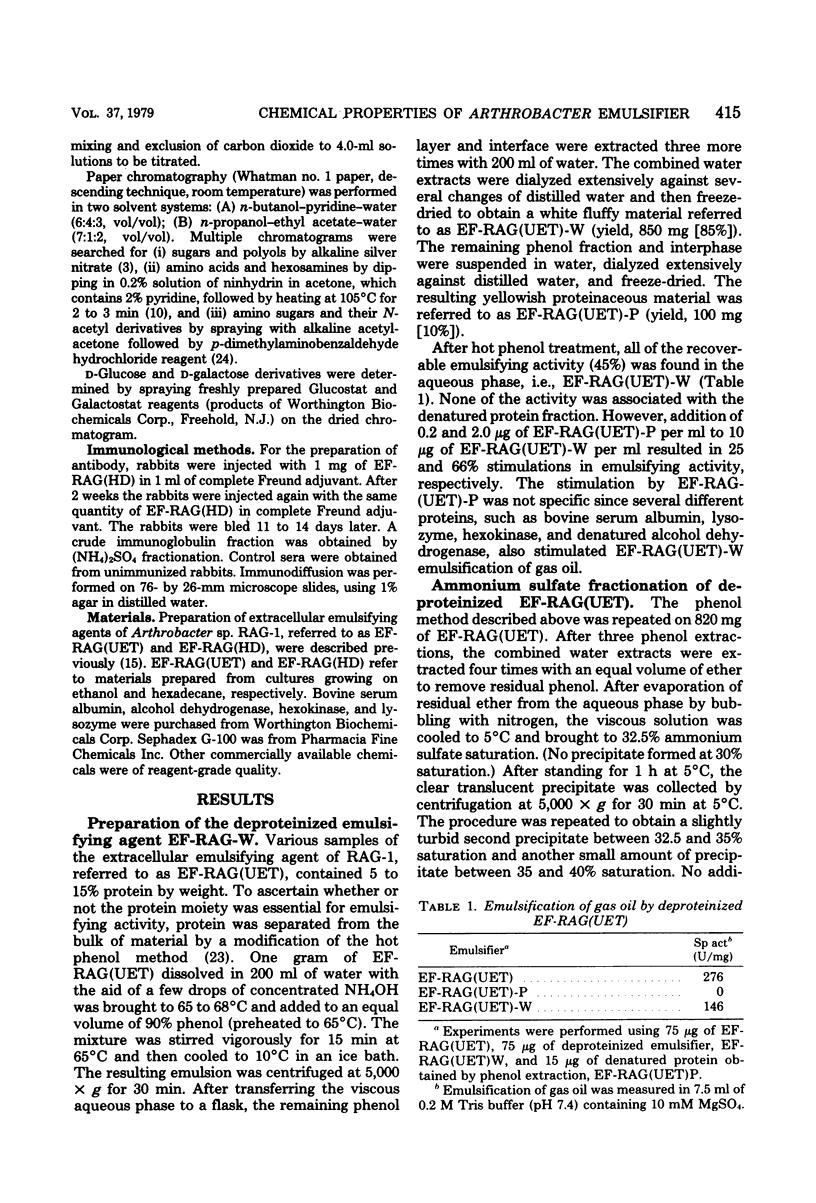
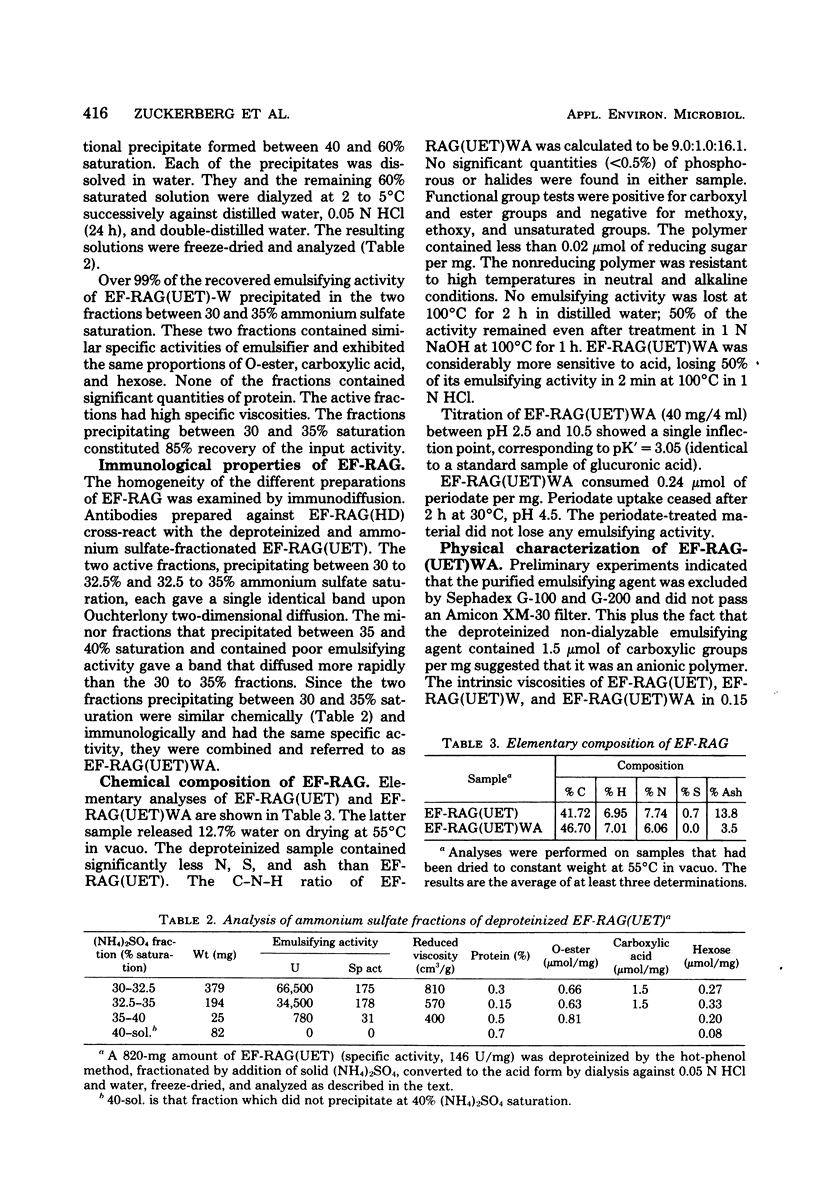
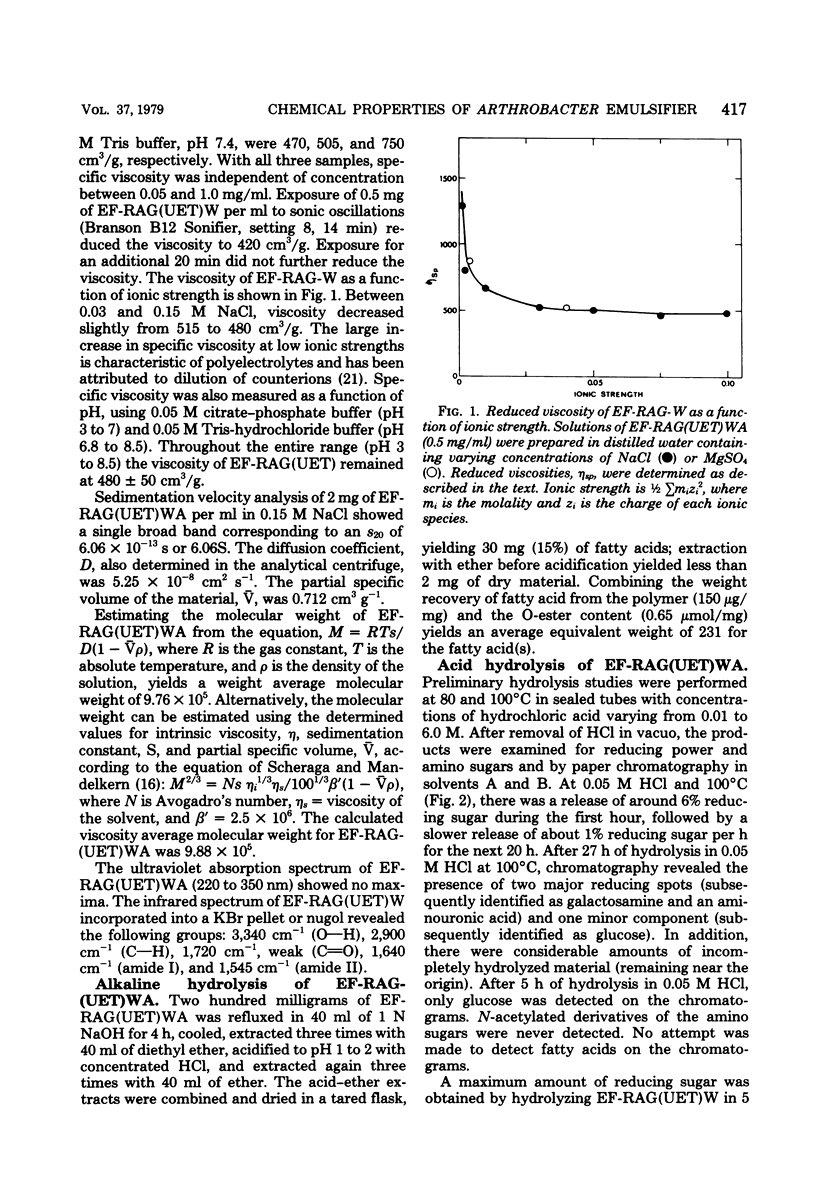
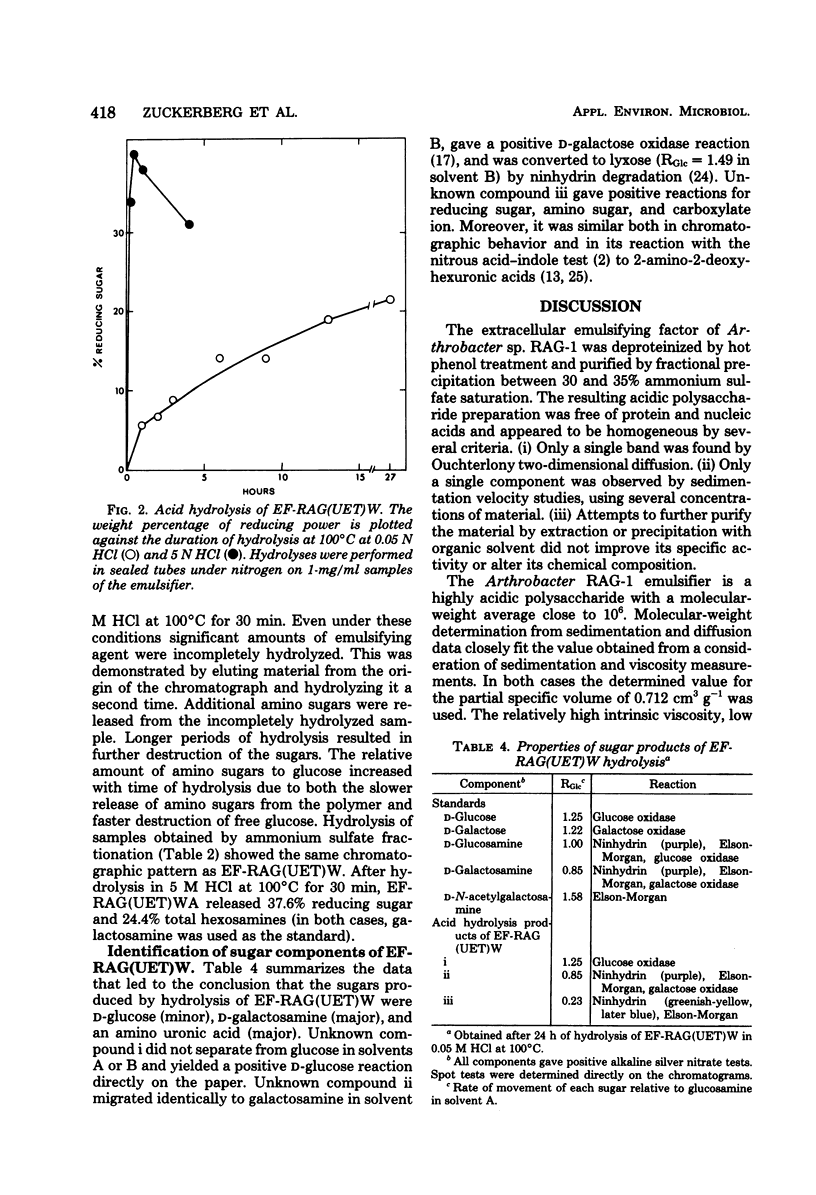
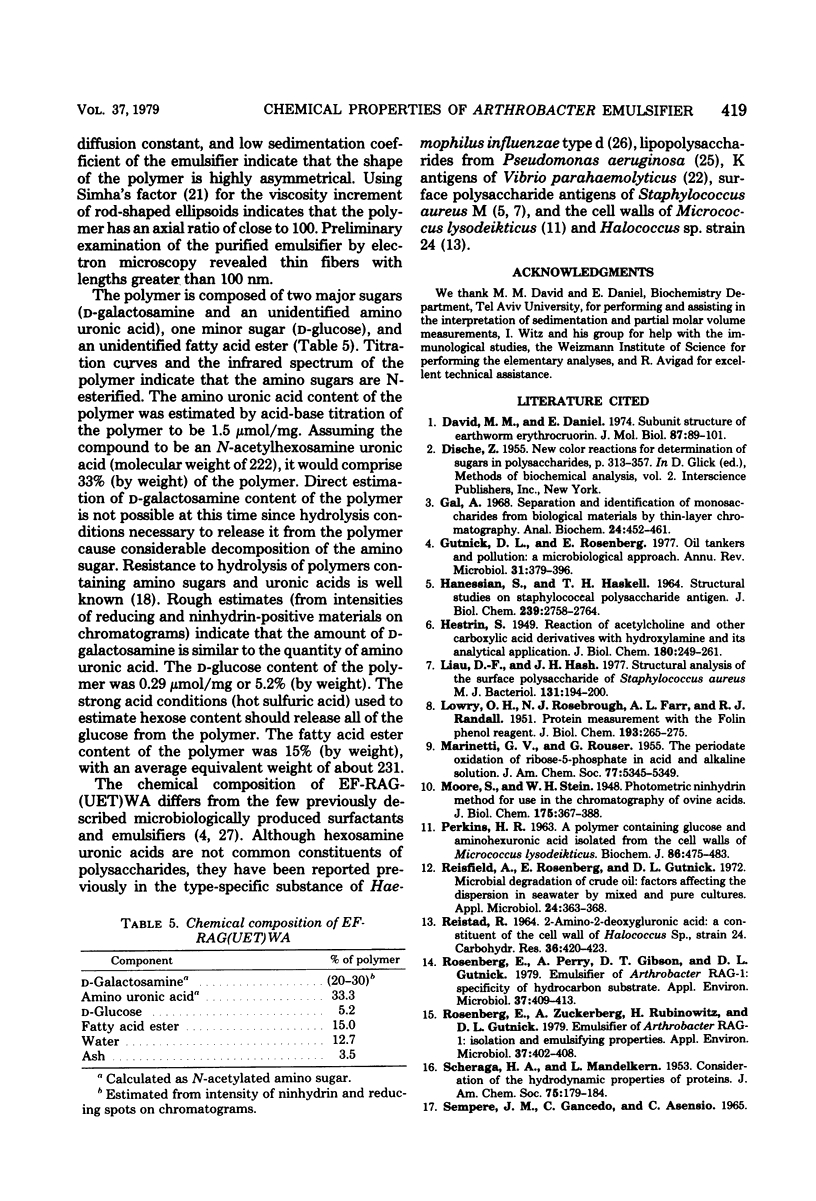
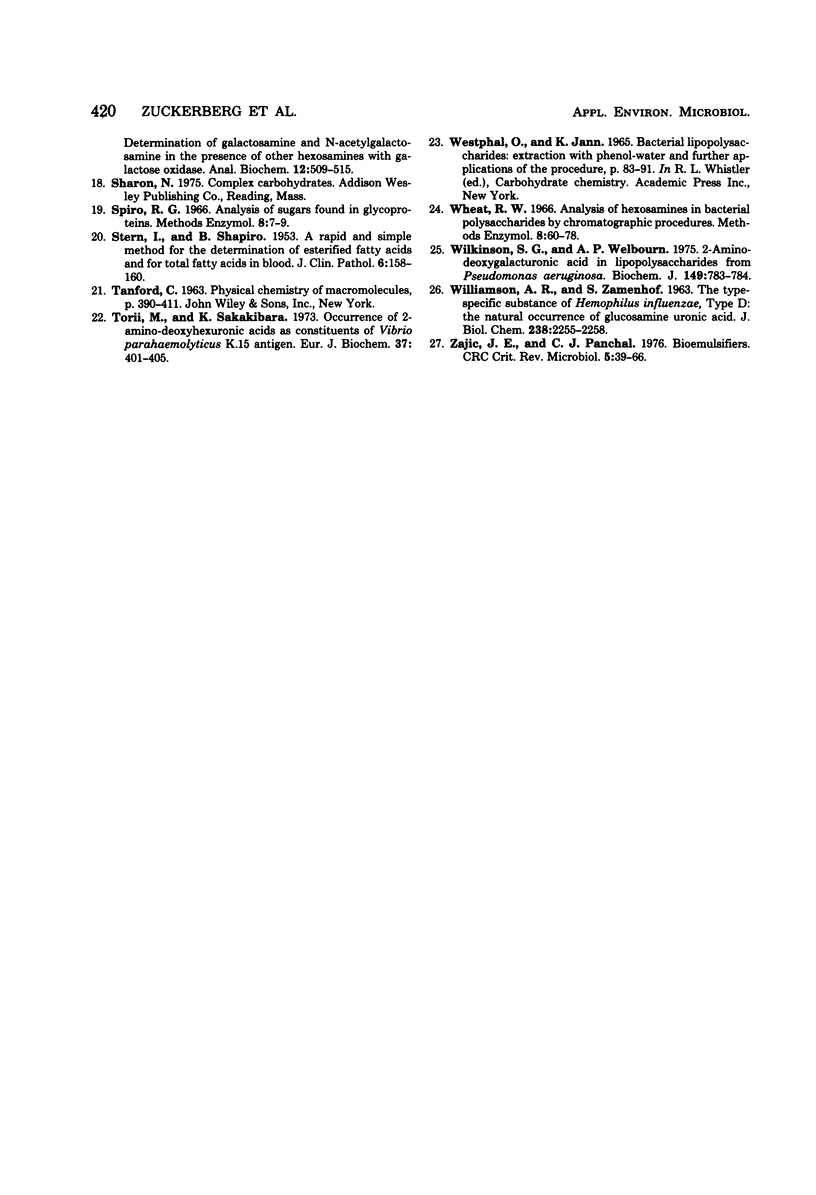
Selected References
These references are in PubMed. This may not be the complete list of references from this article.
- DISCHE Z. New color reactions for determination of sugars in polysaccharides. Methods Biochem Anal. 1955;2:313–358. doi: 10.1002/9780470110188.ch11. [DOI] [PubMed] [Google Scholar]
- David M. M., Daniel E. Subunit structure of earthworm erythrocruorin. J Mol Biol. 1974 Jul 25;87(1):89–101. doi: 10.1016/0022-2836(74)90561-0. [DOI] [PubMed] [Google Scholar]
- Gal A. E. Separation and identification of monosaccharides from biological materials by thin-layer chromatography. Anal Biochem. 1968 Sep;24(3):452–461. doi: 10.1016/0003-2697(68)90152-8. [DOI] [PubMed] [Google Scholar]
- Gutnick D. L., Rosenberg E. Oil tankers and pollution: a microbiological approach. Annu Rev Microbiol. 1977;31:379–396. doi: 10.1146/annurev.mi.31.100177.002115. [DOI] [PubMed] [Google Scholar]
- HANESSIAN S., HASKELL T. H. STRUCTURAL STUDIES ON STAPHYLOCOCCAL POLYSACCHARIDE ANTIGEN. J Biol Chem. 1964 Sep;239:2758–2764. [PubMed] [Google Scholar]
- LOWRY O. H., ROSEBROUGH N. J., FARR A. L., RANDALL R. J. Protein measurement with the Folin phenol reagent. J Biol Chem. 1951 Nov;193(1):265–275. [PubMed] [Google Scholar]
- Liau D. F., Hash J. H. Structural analysis of the surface polysaccharide of Staphylococcus aureus M. J Bacteriol. 1977 Jul;131(1):194–200. doi: 10.1128/jb.131.1.194-200.1977. [DOI] [PMC free article] [PubMed] [Google Scholar]
- PERKINS H. R. A polymer containing glucose and aminohexuronic acid isolated from the cell walls of micrococcus lysodeikticus. Biochem J. 1963 Mar;86:475–483. doi: 10.1042/bj0860475. [DOI] [PMC free article] [PubMed] [Google Scholar]
- Reisfeld A., Rosenberg E., Gutnick D. Microbial degradation of crude oil: factors affecting the dispersion in sea water by mixed and pure cultures. Appl Microbiol. 1972 Sep;24(3):363–368. doi: 10.1128/am.24.3.363-368.1972. [DOI] [PMC free article] [PubMed] [Google Scholar]
- Reistad R. 2-Amino-2-deoxyguluronic acid: a constituent of the cell wall of Halococcus sp., strain 24. Carbohydr Res. 1974 Sep;36(2):420–423. doi: 10.1016/s0008-6215(00)83066-9. [DOI] [PubMed] [Google Scholar]
- Rosenberg E., Perry A., Gibson D. T., Gutnick D. L. Emulsifier of Arthrobacter RAG-1: specificity of hydrocarbon substrate. Appl Environ Microbiol. 1979 Mar;37(3):409–413. doi: 10.1128/aem.37.3.409-413.1979. [DOI] [PMC free article] [PubMed] [Google Scholar]
- Rosenberg E., Zuckerberg A., Rubinovitz C., Gutnick D. L. Emulsifier of Arthrobacter RAG-1: isolation and emulsifying properties. Appl Environ Microbiol. 1979 Mar;37(3):402–408. doi: 10.1128/aem.37.3.402-408.1979. [DOI] [PMC free article] [PubMed] [Google Scholar]
- STERN I., SHAPIRO B. A rapid and simple method for the determination of esterified fatty acids and for total fatty acids in blood. J Clin Pathol. 1953 May;6(2):158–160. doi: 10.1136/jcp.6.2.158. [DOI] [PMC free article] [PubMed] [Google Scholar]
- Torii M., Sakakibara K., Kuroda K. Occurrence of 2-amino-2-deoxy-hexuronic acids as constituents of Vibrio parahaemolyticus K15 antigen. Eur J Biochem. 1973 Sep 3;37(3):401–405. doi: 10.1111/j.1432-1033.1973.tb02999.x. [DOI] [PubMed] [Google Scholar]
- WILLIAMSON A. R., ZAMENHOF S. The type-specific substance of Hemophilus influenzae, type d: the natural occurrence of glucosamine uronic acid. J Biol Chem. 1963 Jul;238:2255–2258. [PubMed] [Google Scholar]
- Wilkinson S. G., Welbourn A. P. 2-Amino-2-deoxygalacturonic acid in lipopolysaccharides from Pseudomonas aerugimosa. Biochem J. 1975 Sep;149(3):783–784. doi: 10.1042/bj1490783. [DOI] [PMC free article] [PubMed] [Google Scholar]
- Zajjc J. E., Panchal C. J. Bio-emulsifiers. CRC Crit Rev Microbiol. 1976 Nov;5(1):39–66. doi: 10.3109/10408417609102309. [DOI] [PubMed] [Google Scholar]


